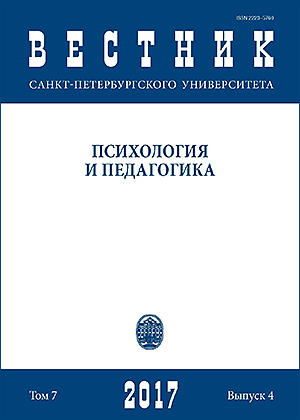Воплощенное познание (embodied cognition): основные направления исследований
DOI:
https://doi.org/10.21638/11701/spbu16.2017.404Аннотация
Дается краткая характеристика подхода «Воплощенное познание», а также рассматривается структура данной области знания в соответствии с используемыми типами объяснительных моделей. Анализируются три направления современных исследований в рамках подхода «Воплощенное познание»: феноменологический подход, теория динамических систем, неоэкологический подход. В рамках феноменологического подхода рассматриваются два независимых направления: нейрофеноменология, предполагающая использование методов феноменологии в когнитивных исследованиях, и феноменология-как-точка-отсчета, делающая акцент на использовании идей и представлений феноменологов на этапе экспериментального планирования. Описываются теории симуляции, занимающие промежуточное положение между феноменологическим подходом и подходом «Укорененное познание». Рассматриваются ключевые элементы неоэкологического подхода, в рамках которого выделяются два направления, каждый из которых предлагает свой вариант описания перцептивно-моторного взаимодействия. Первое направление апеллирует к понятию репрезентации и представлено в первую очередь теорией общего кодирования. Второе направление использует понятие аффорданса и предлагает несколько решений проблемы измерения аффордансов. Рассматриваются основания для использования теории динамических систем в когнитивной психологии на примере изучения природы ошибки «А-не-Б» в современных исследованиях когнитивного развития. Обсуждается актуальный статус теории динамических систем в когнитивных исследованиях. В заключении дается общая характеристика ценности и новизны описанных подходов
Ключевые слова:
воплощенное познание, воплощенность, когнитивная психология, нейрофеноменология, неоэкологический подход, аффорданс, теория динамических систем
Скачивания
Библиографические ссылки
Загрузки
Опубликован
Как цитировать
Выпуск
Раздел
Лицензия
Статьи журнала «Вестник Санкт-Петербургского университета. Психология» находятся в открытом доступе и распространяются в соответствии с условиями Лицензионного Договора с Санкт-Петербургским государственным университетом, который бесплатно предоставляет авторам неограниченное распространение и самостоятельное архивирование.




